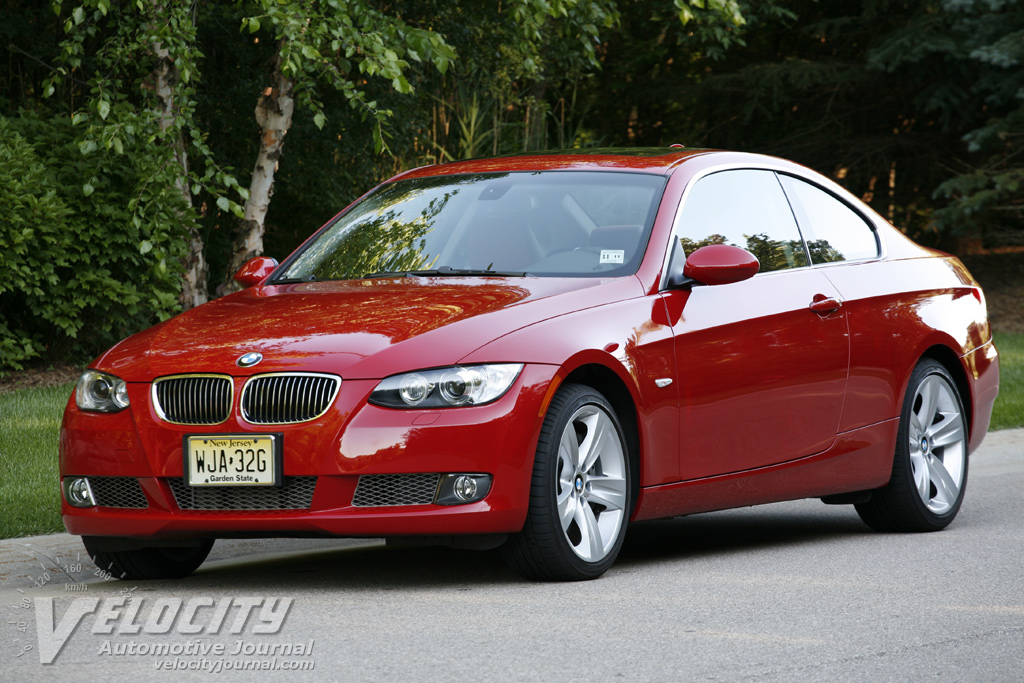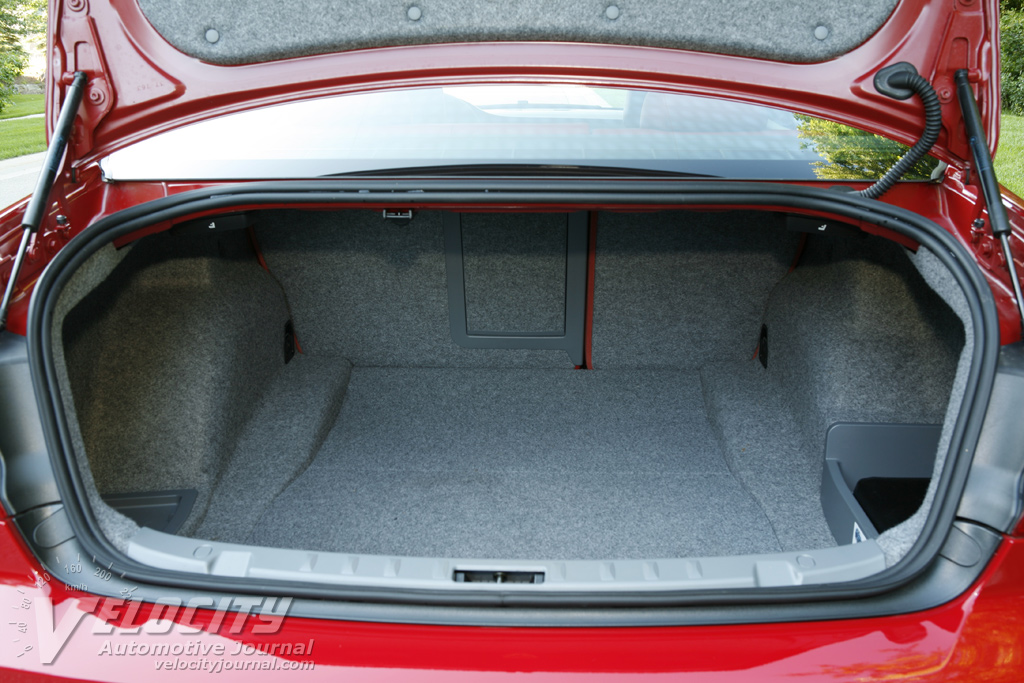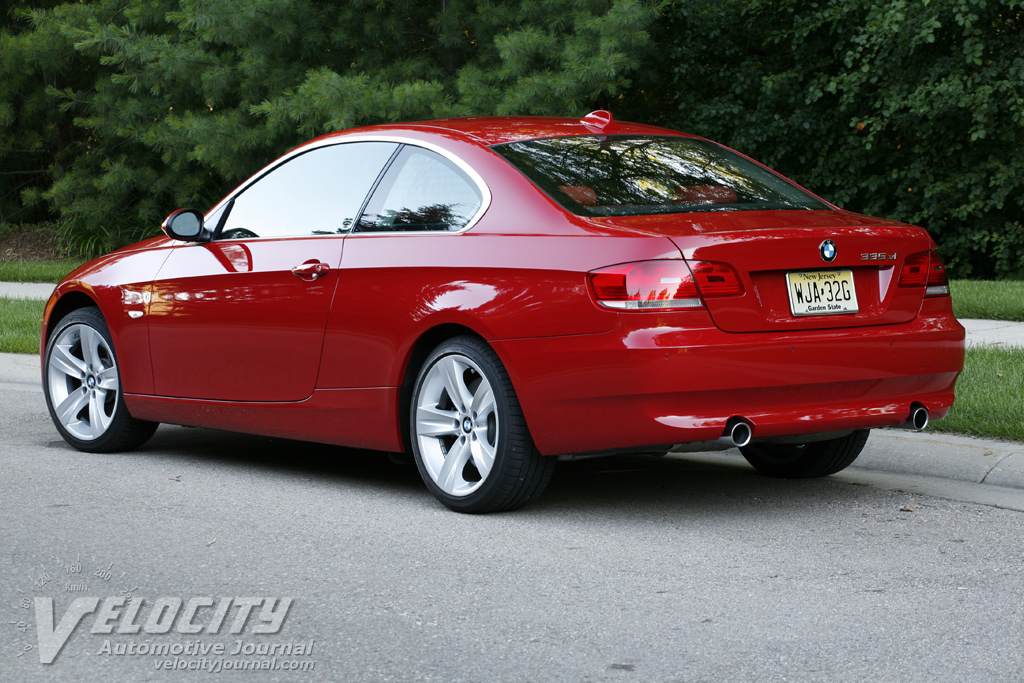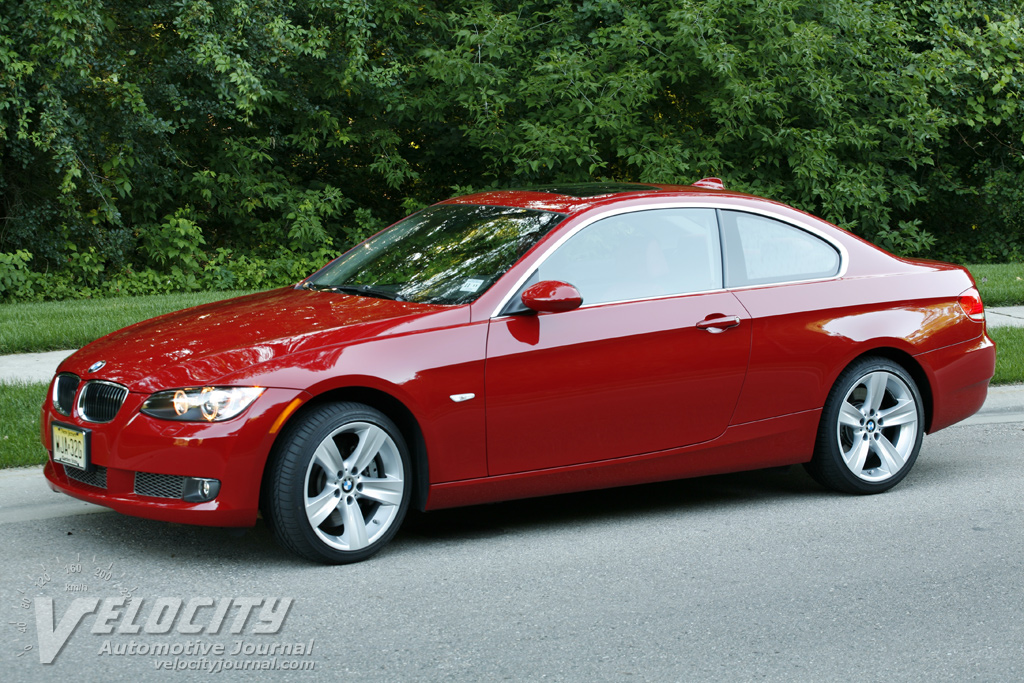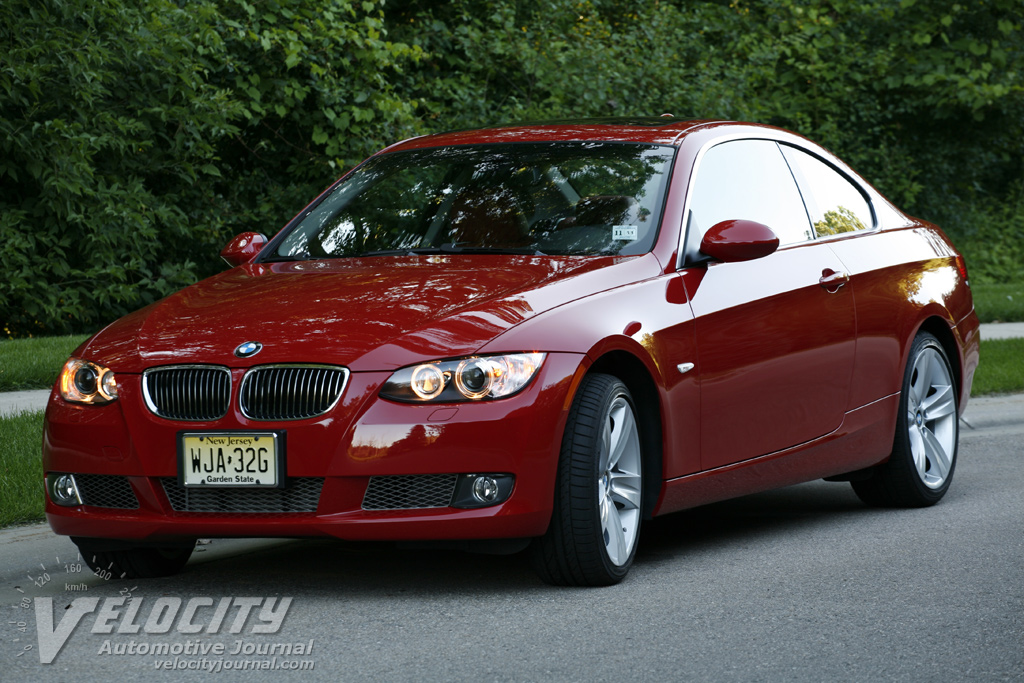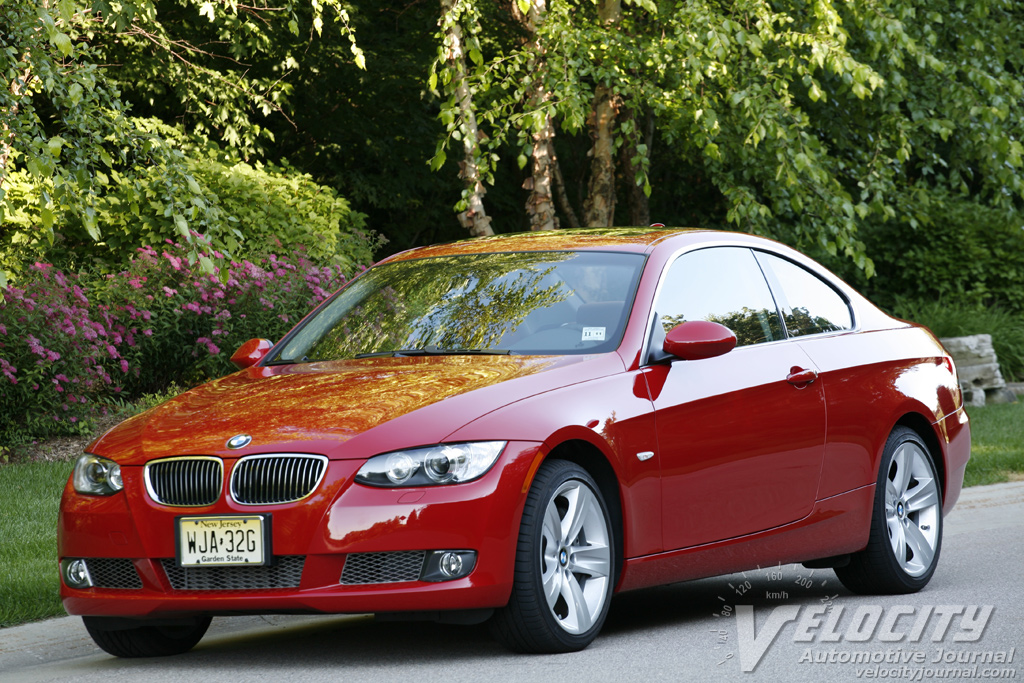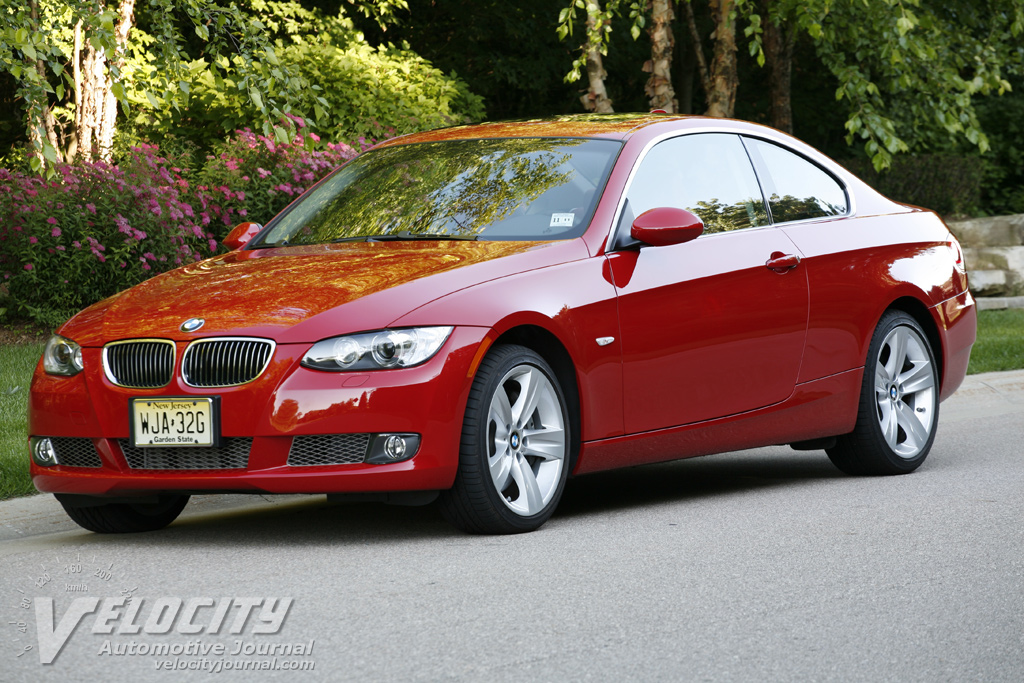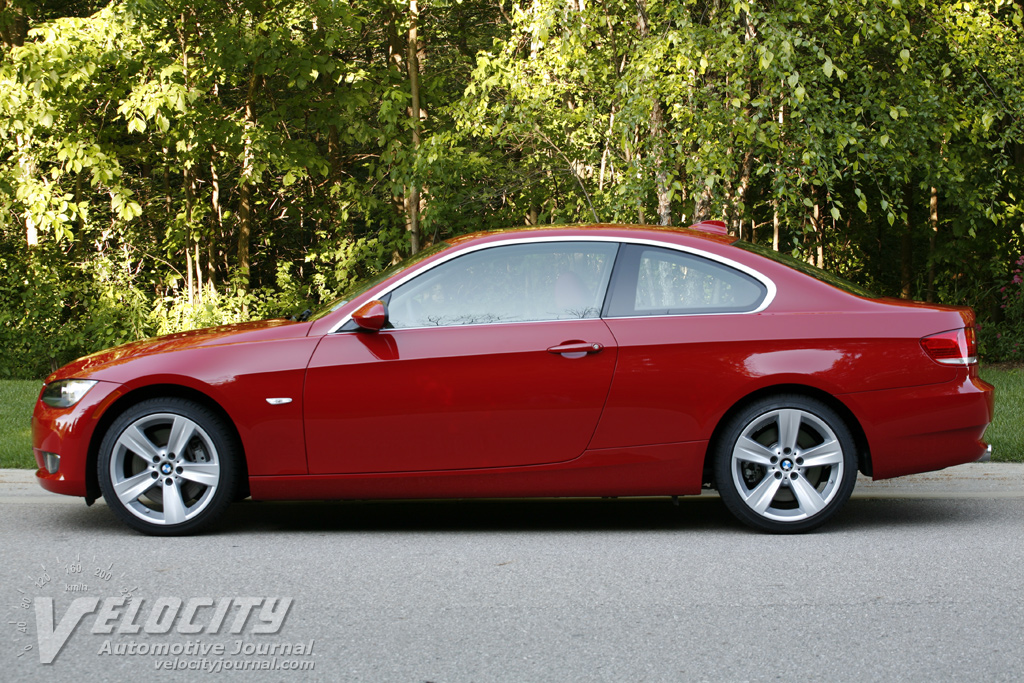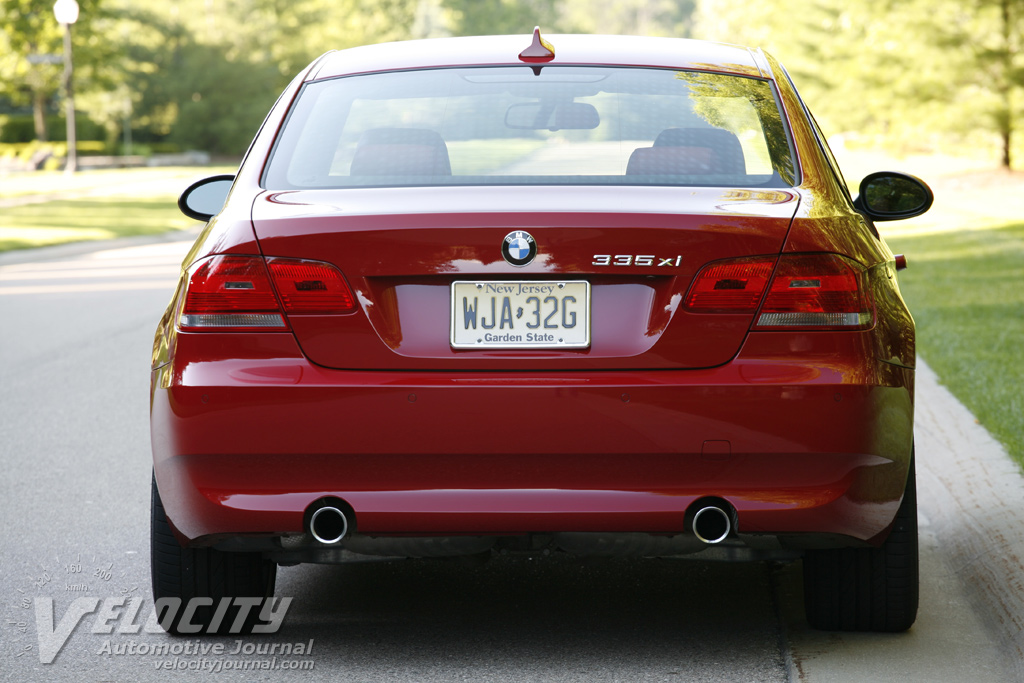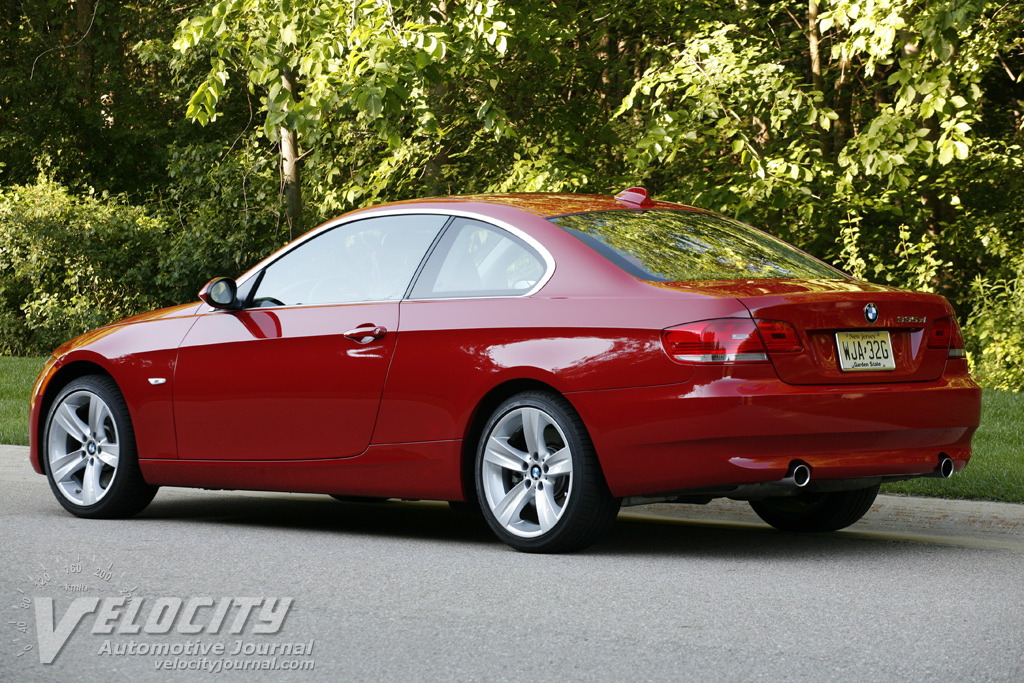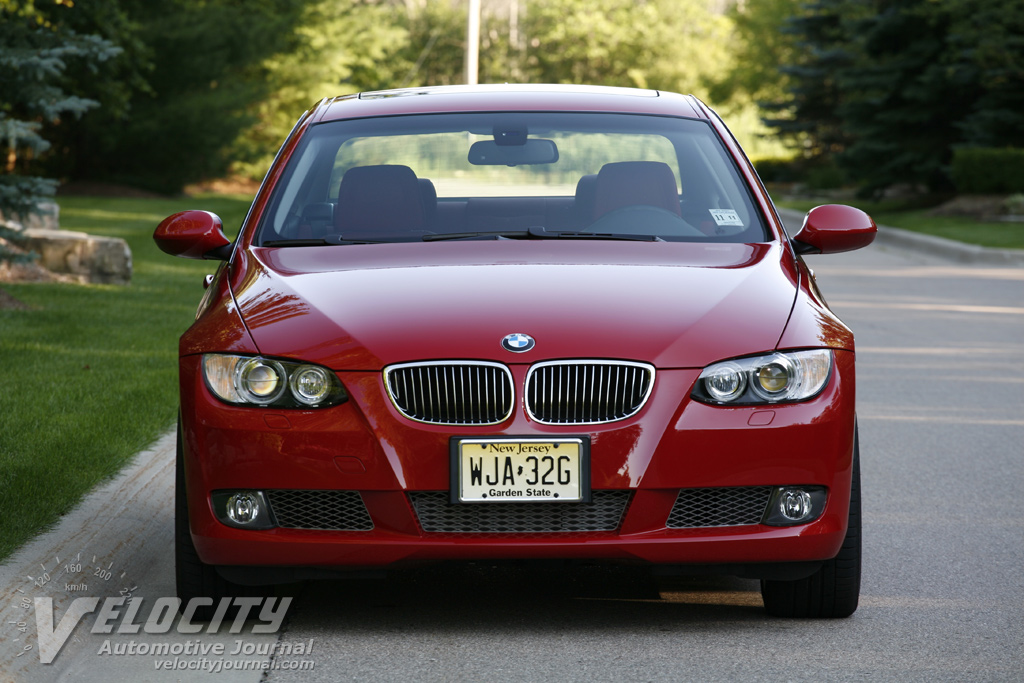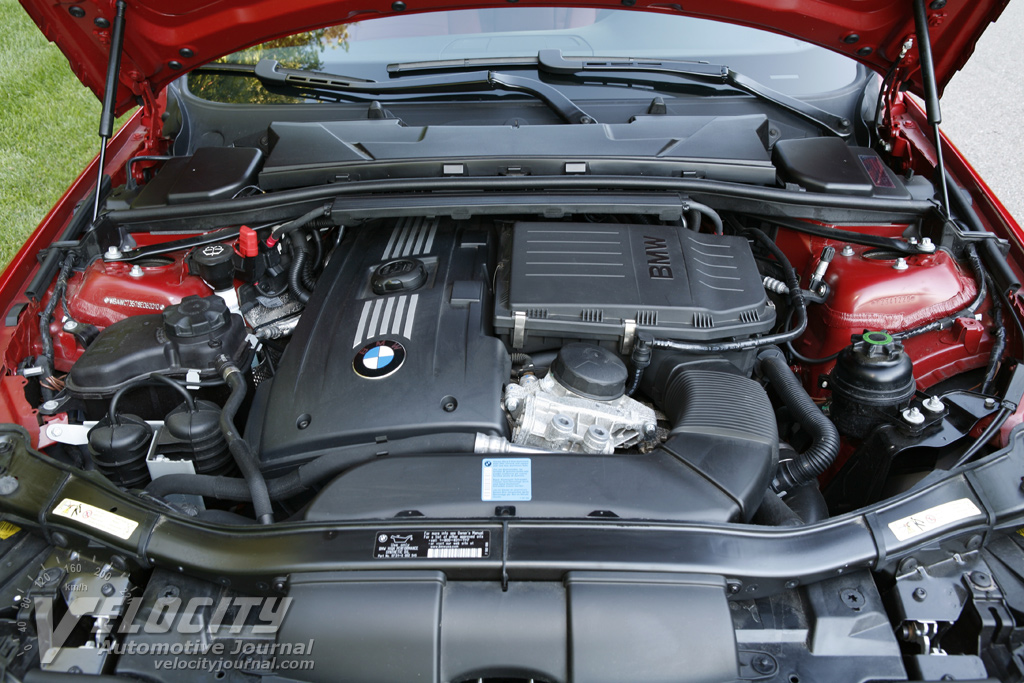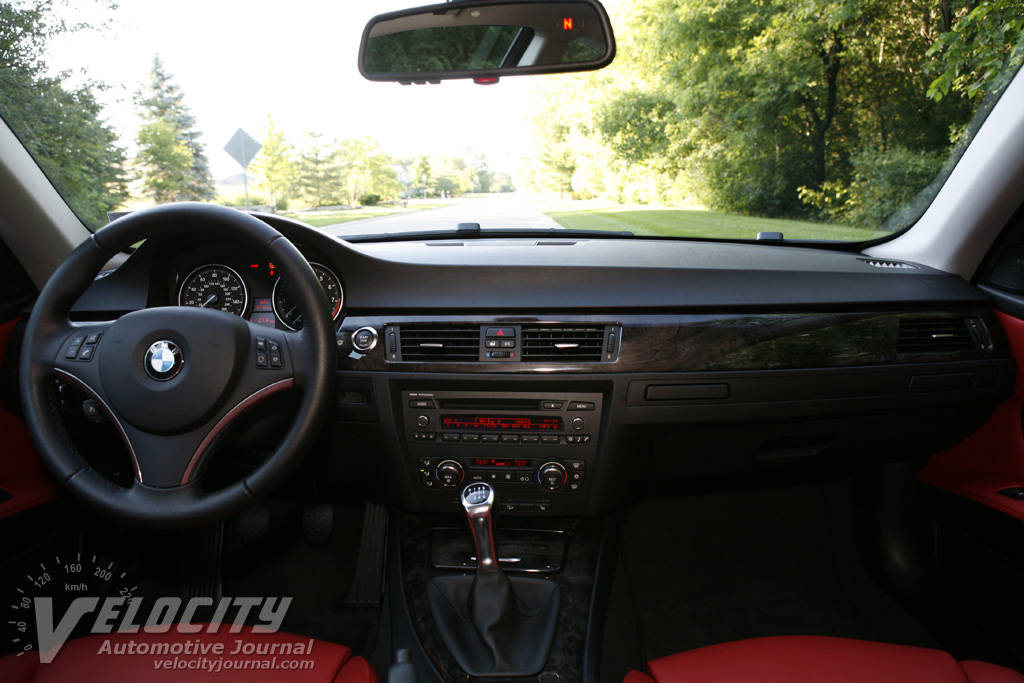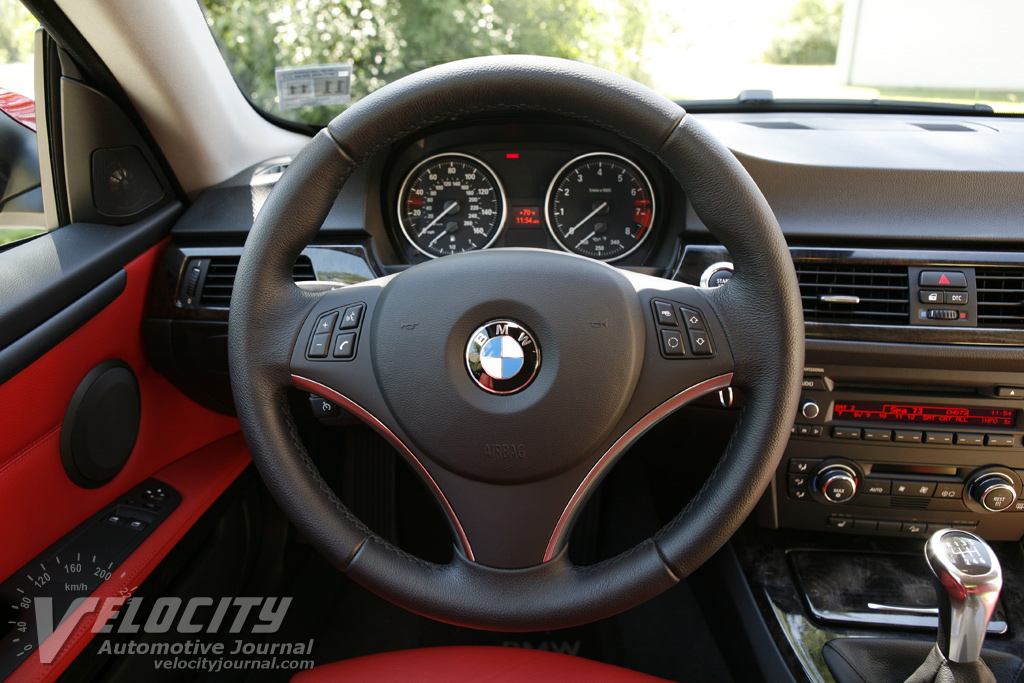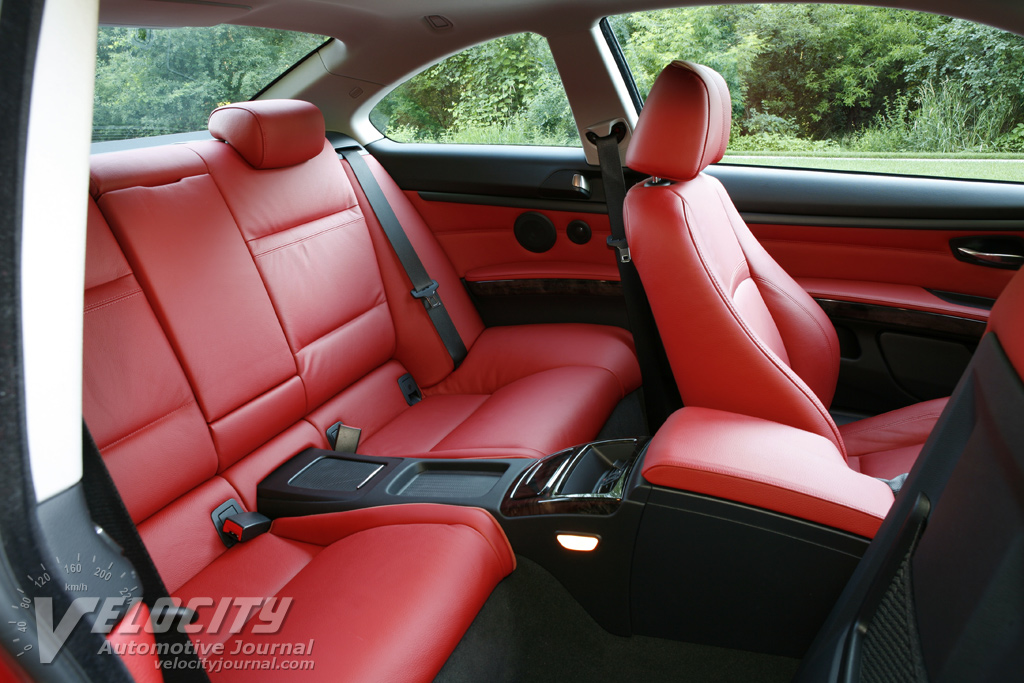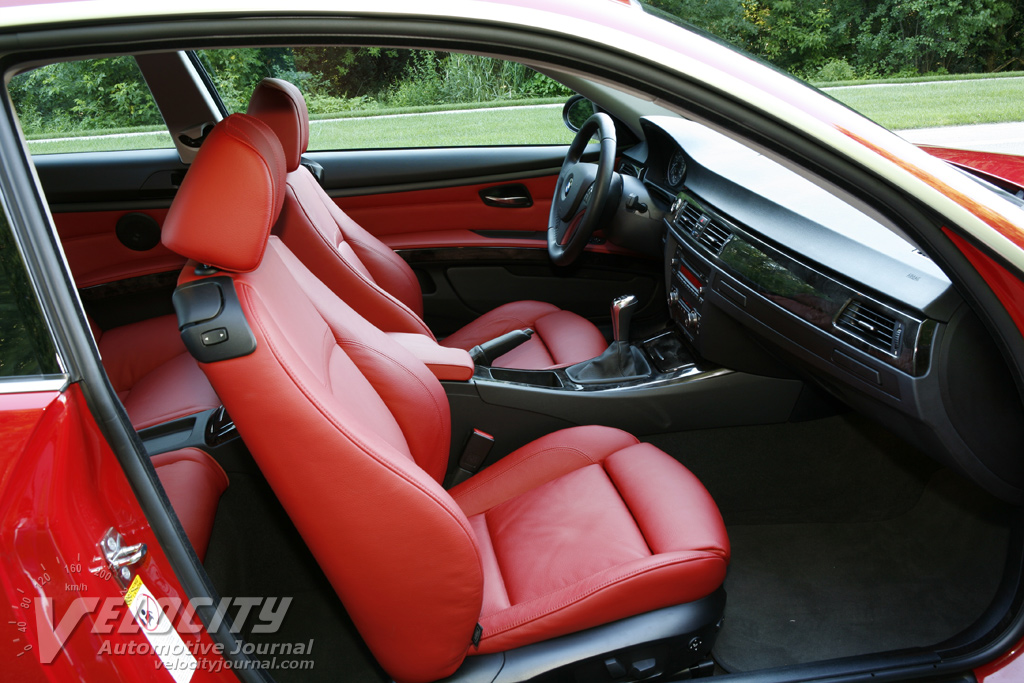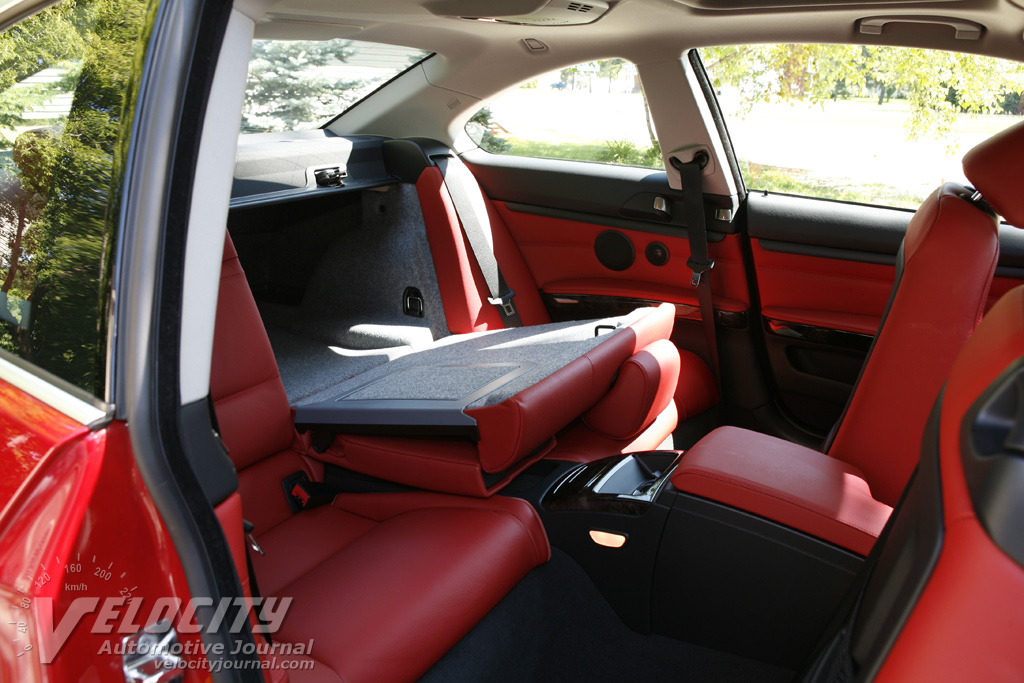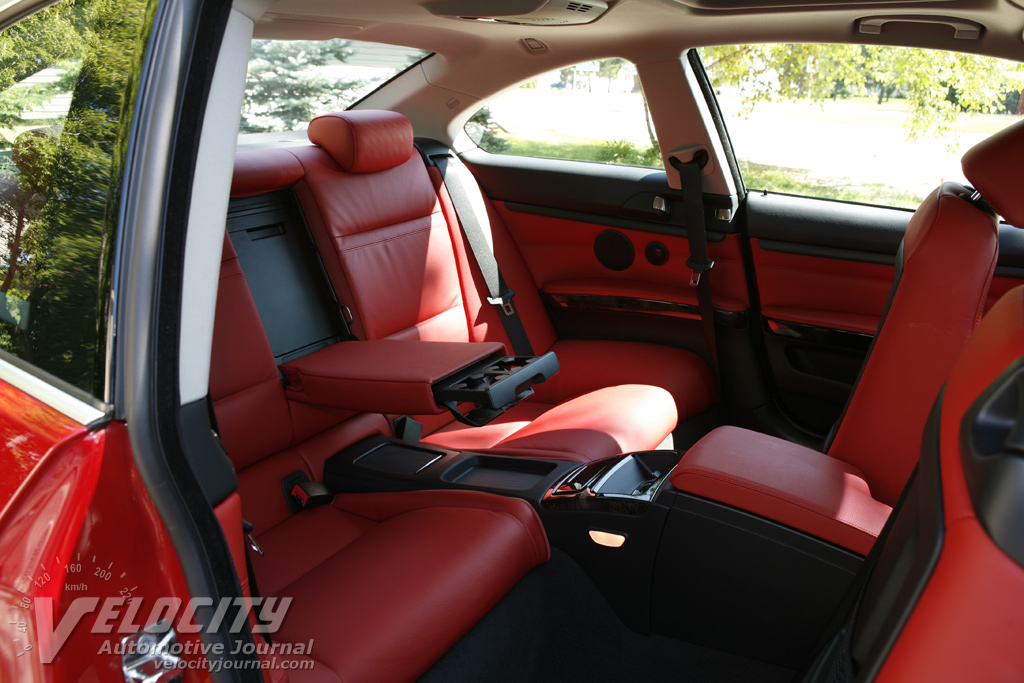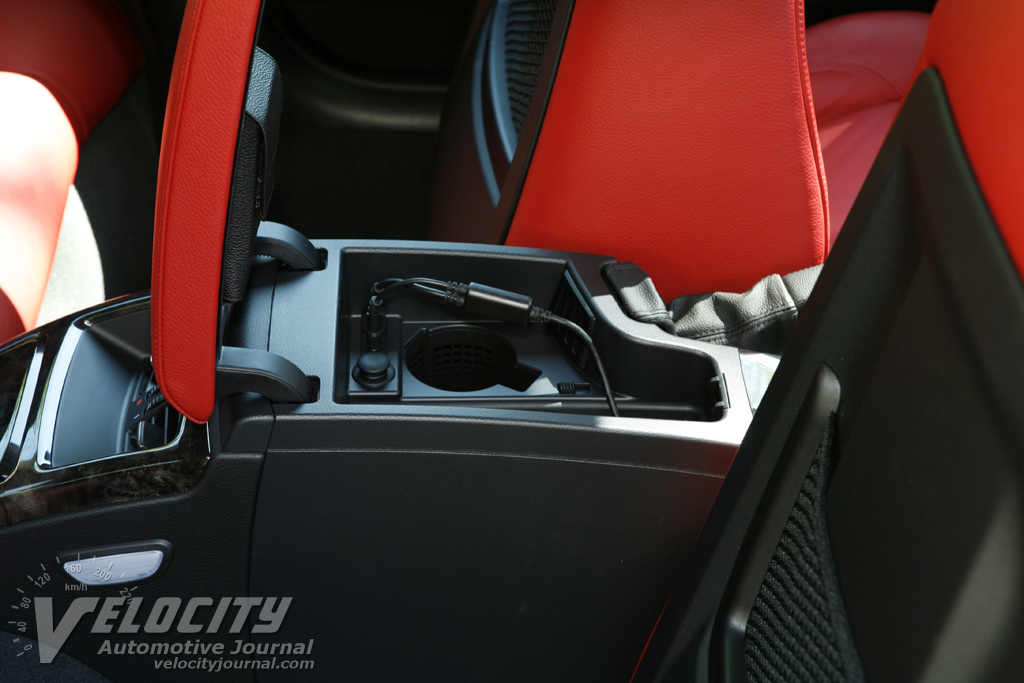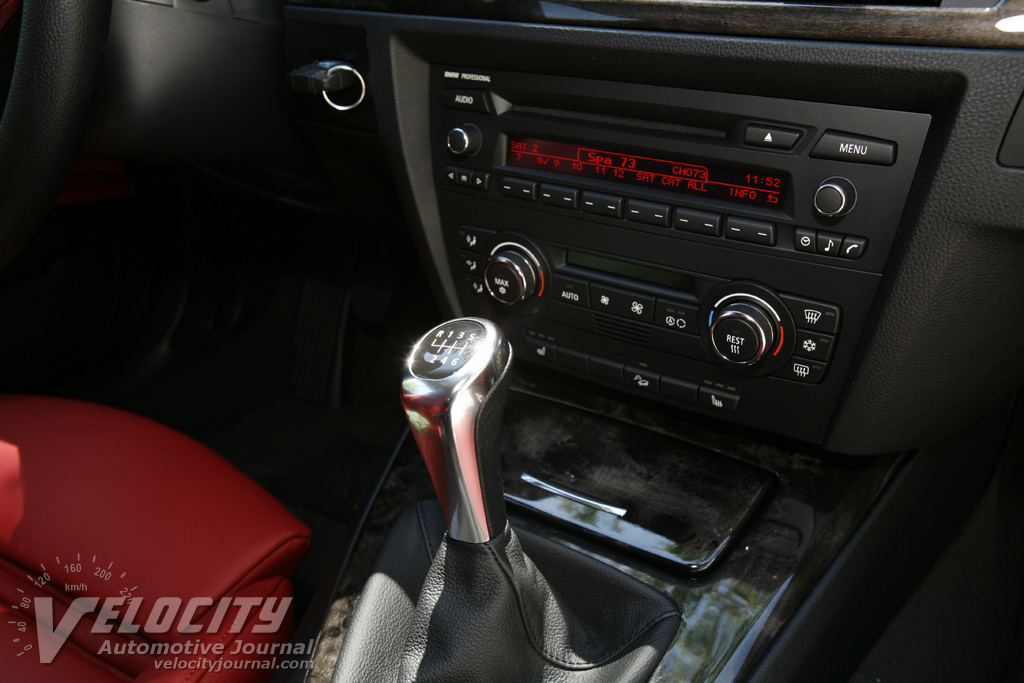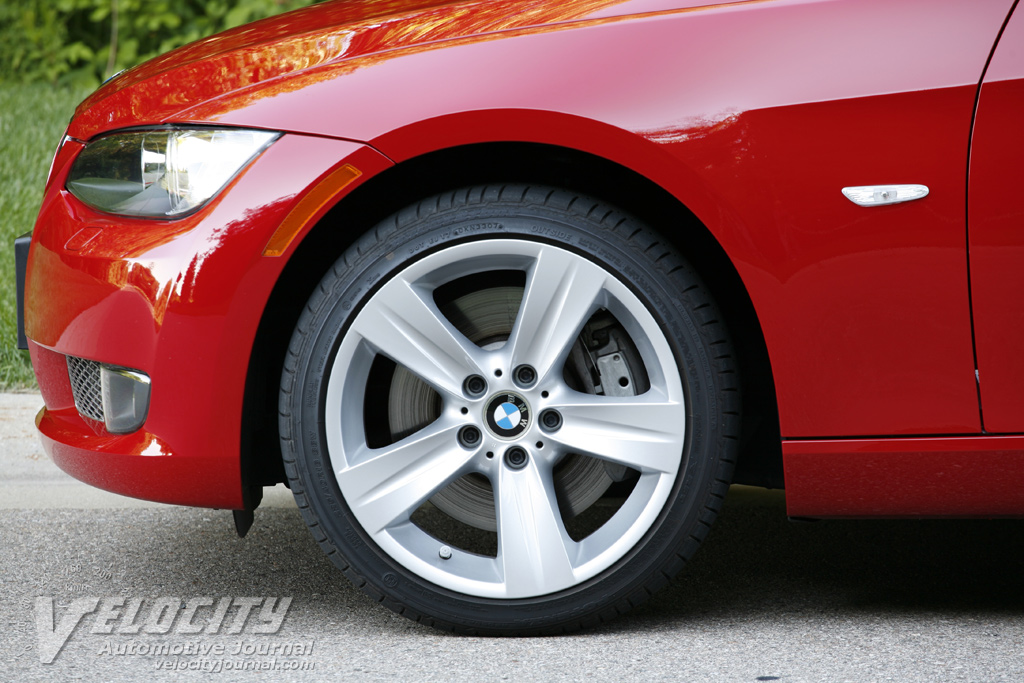2008 BMW 335xi Coupe
07/07/2008
Shahed Hussain
Whenever BMW revamps its 3-Series, it's eagerly anticipated by automotive enthusiasts. Occasionally, the Bavarian automaker slips in a model that doesn't make much of a splash. A case in point: the 335xi coupe and its lesser sibling, the 328xi. BMW intends the all-wheel drive coupes to fend off the new Audi A5. The Infiniti G37 is also a worthy alternative, although the Japanese coupe isn't available with AWD.
Aside from the M3, the 335xi coupe is the top model in the 3-Series lineup; BMW prices it accordingly with a starting price of $43,000 (our tested 2008 335xi had a base price of $42,600). Option packages in our test vehicle included the Cold Weather Package ($600), Premium Package ($2,550), Sport Package ($400), 18-inch wheels & performance tires ($600), Comfort Access System ($500), Park Distance Control ($350), iPod and USB adapter ($400), HD Radio ($350), and satellite radio ($595). Including the $775 destination charge, the total sticker price was $49,720. We would pare the option list by removing the Comfort Access System, Park Distance Control, HD radio, and satellite radio. A 335xi equipped according to our preferences would have cost $47,925, a still considerable sum.
BMW offers several interior color schemes on 3-Series models; our 335xi was upholstered in Coral Red/Black Dakota leather. Also included is leather covering for the door inserts, gear shift lever, handbrake, and steering wheel. Available interior trim options include aluminum, walnut, and two shades of poplar wood at no extra charge. The test vehicle had a band of glossy gray poplar spanning the dashboard, with additional wood veneer lining the door armrests and center console.
From a driver's perspective, the cockpit is all business. The tested 335xi was not equipped with the optional navigation system and iDrive, so most controls were logically located and easily accessible. Slide into the red leather sport seats, and the driver faces a compact leather-wrapped steering wheel with buttons for audio and mobile phone conveniently integrated on the spokes. Between the 160-MPH speedometer and 8,000 RPM tachometer is a driver information display that indicates outside temperature, fuel economy, and odometer mileage. If the cruise control is active, a small needle rotates around the speedometer to graphically indicate the set speed. Due to the turbocharged engine, BMW substitutes oil temperature for the usual analog fuel temperature gauge. To fire up the inline six, press the engine start/stop button on the dashboard. The key fob slips into a slot next to the steering column, or you can keep in your pocket; if the driver possesses the fob, the engine will start.
Controls for the premium harman/kardon Logic 7 AM/FM/CD/MP3/Sirius/HD radio audio system are logically laid out on the center stack; the upgraded stereo includes 13-speakers plus dual subwoofers. Although most of the climate control knobs and buttons are logically labeled, some require consulting the owner's manual. Under a flip-out lid on the console is the ashtray and a 12V power outlet. From the driver's seat, the polished aluminum and leather-topped shifter for the 6-speed manual gearbox is within easy reach. A rubber-lined bin next the handbrake can hold mobile phones or other small objects. BMW put the slide-out cupholders on the passenger's side of the dashboard, as opposed to the conventional center console location; this prevents the driver's elbow from hitting beverage containers when shifting gears. Under the center console bin is an optional iPod and auxiliary input; the bin also contains an additional 12V power outlet and cupholder.
The optional 8-way power sport seats offer a multitude of adjustments, including power lumbar, backrest width, and extendable thigh cushions; on a 300-mile road trip, these seats proved superbly comfortable. As an added convenience, automatic holders extend and retract the seat belts for the driver and front passenger. The optional Comfort Access system allows easy access to the rear seats: press the rocker button on the motorized front passenger seat, and it slowly slides forward or backward. We aren't convinced that the Comfort Access system is superior to a simpler spring-loaded mechanism, but it is more elegant. Unlike the 5-passenger sedans, the coupe's center console divides the rear seats for only two occupants. A folding armrest between the seats reveals a pass-through into the trunk; dual cupholders slide out from the front of the armrest. Rear passengers taller than 6' will find limited headroom, but otherwise the seats provide decent comfort and adequate legroom. Unlike some of its competitors, the 335xi offers relatively spacious rear accommodations.
BMWs are often lauded for their powertrains, so it comes as no surprise that the twin-turbo 3.0L in the 335xi is a superb example of the breed. The DOHC inline-6 delivers power seamlessly from idle to the 6,900 RPM redline, without the sudden surge common to other turbocharged engines; turbo lag is non-existent. Double VANOS technology varies valve timing for the intake and exhaust cams. Although the twin-turbo six has nearly the identical displacement as the normally aspirated powerplant in the 328i, it differs significantly from the non-turbo 3.0L due to its all-aluminum block with cast-iron liners, direct fuel injection, and different bore/stroke dimensions. The dual turbochargers boost the straight-six to 300-bhp @ 5,800 RPM, 300 lb.-ft. of torque plateaus from 1,400-5,000 RPM. BMW claims a 0-60 MPH time of 5.2 seconds for 335xi equipped with the 6-speed manual, which is actually 0.1 second quicker than rear-drive 335i. All-wheel drive 3-Series models are limited to 130 MPH, but a Sport Package-equipped RWD 328i or 335i benefits from a higher speed limit of 150 MPH. According to the EPA, the 335xi is rated 16/25 MPG (city/highway); our primarily highway driving resulted in 23.5 MPG overall.
The turbocharged inline-6 gets a standard ZF Type G 6-speed manual transmission (a ZF 6-speed automatic is optional). The ZF gearbox is a close-ratio unit: sixth gear is the only overdrive ratio (0.87:1). Although the long-throw lever slides smoothly into each gear, the second to third shift is sometimes easy to miss, partly because of the narrowly separated gates. To engage reverse, push down the on the shift lever, while simultaneously sliding up and to the left; this requires practice to execute consistently. In contrast to the sometimes recalcitrant gear linkage, the fluid, progressive clutch actuation is a pleasure; pedal effort is relatively light, especially considering the 300 lb.-ft. of torque available.
To cope with severe duty on German autobahns, the 335xi gets 4-wheel vented disc brakes with aluminum calipers and 13.7" diameter/13.2" diameter (front/rear) rotors. Superb pedal feel and fade-free stops are the result; there is never any doubt that the brakes are a match for the powertrain. For enhanced braking and handling, BMW equips the 335xi with a host of advanced technologies such as Dynamic Stability Control, ABS, Dynamic Brake Control, Brake Fade Compensation, Brake Standby, Brake Drying, Start-off Assistant, and Hill Descent Control.
Sport Package-equipped 335xi model have no spare tire; run-flat tires are standard. The optional 18-inch alloy wheels are shod with Bridgestone RE050A RFT summer tires: 225/45R18 (front) and 255/35R18 (rear). Like other run-flat tires, the Bridgestones have stiff sidewalls that sometimes reduce suspension compliance, but this is mostly noticeable on the severely potholed roads. Some customers may be tempted to replace the run-flats with a set of standard RE050A tires, but without a spare, this is a risky proposition. Despite the invaluable traction advantages of AWD in northern winters, owners would be wise to swap out the Bridgestone summer tires for all-season or dedicated winter tires before venturing out in a snowstorm.
Compared to the 3,571 lb. curb weight of the rear-drive 335i, the AWD driveline in the 335xi adds another 188 lbs. The additional mass over the front wheels results in a 52.8/47.2 (front/rear) weight distribution, marginally worse than the 335i: 51.2/48.8 (front/rear). The best-balanced coupe in the lineup is the relatively featherweight 328i (3,351 lbs.), which manages a near-ideal 50.3/49.7 (front/rear) ratio.
Despite its front-heavy driveline, the 335xi certainly lives up to BMW's reputation for superb handling. The nearly perfectly weighted steering communicates road textures to the driver, whether you're carving through S-curves or cruising on the freeway. At low speeds, steering effort is higher than one might expect; some owners may desire additional power assist. Although our tested 335xi was an all-wheel drive model, we could not detect any understeer or steering feedback that would confirm that the driveline was diverting torque to the front wheels.
For long road trips, the 335xi is an ideal companion. Quiet and composed on the highway, the BMW reels in the miles effortlessly; the chassis shrugs off potholes and bumps without complaint. With its ample torque reserves, passing other vehicles rarely requires a downshift, just gently press the throttle and the 335xi surges past traffic. Few other coupes can match this BMW's balance of precise handling and grand touring capabilities.
As a sport coupe, the 335xi is difficult to fault: a nearly faultless powertrain coupled to a superb handling chassis, combined with the security of AWD traction. For customers without any marque bias, the Audi A5 is perhaps a better value, but the BMW's 300-bhp inline-6 edges out the 265-bhp V-6 in the Audi. A less expensive option within the 3-Series lineup is the lighter 328xi Coupe, which slices off over $5,000 from the sticker price, in exchange for 70 fewer horsepower and arguably superior handling. However, if you have the budget to put a 335xi in your garage, it's a decision you won't regret.

